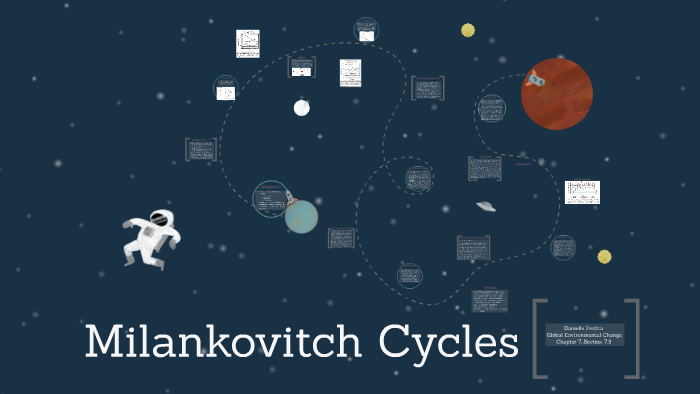The first of the three Milankovitch Cycles is the Earth's eccentricity. Eccentricity is, simply, the shape of the Earth's orbit around the Sun. This constantly fluctuating, orbital shape ranges between more and less elliptical (0 to 5% ellipticity) on a cycle of about 100,000 years. Apr 19, 2019 Astronomer Milutin Milankovitch developed the mathematical formulas upon which these orbital variations are based. He hypothesized that when some parts of the cyclic variations are combined and occur at the same time, they are responsible for major changes in the earth's climate (even ice ages). Apr 21, 2021 Milankovitch cycles include the shape of Earth’s orbit (its eccentricity), the angle that Earth’s axis is tilted with respect to Earth’s orbital plane (its obliquity), and the direction that Earth’s spin axis is pointed (its precession). These cycles affect the amount of sunlight and therefore, energy, that Earth absorbs from the Sun.
In the eyes of Milutin Milankovitch, there’s been a noticeable trend in climate, temperature and seasons due to this cycle. And we can accredit these long-term climate changes to 3 variations in geometry between the Earth and sun:

- ECCENTRICITY: How the Earth orbits the sun.
- OBLIQUITY: What angle Earth faces the sun.
- PRECESSION: How Earth’s axis of rotation changes.
If you put these 3 interactions of Earth and the sun together, they form the Milankovitch Cycle. Let’s explore with more detail.
1. Orbital eccentricity
Earth revolves around the sun in a roughly circular orbit. But roughly every 100,000 years, its orbit becomes more eccentric.
So it starts as a circular orbit like it is in its current state. But like a pendulum, the eccentricity will swing it back the other way with a more elliptical orbit.
Because Venus is so close to Earth, its gravitational interactions slightly pulls Earth in its orbit. Then, colossal Jupiter pulls Earth slightly outside its orbit at the opposite end.
2. Obliquity variation
The next piece of the puzzle is obliquity. Right now, Earth’s obliquity is 23.5°. But during the Milankovitch Cycle, it varies from 22.1° to 24.5° and takes 40,000 years to complete a full cycle.
Earth’s changing obliquity doesn’t alter the total amount of incoming solar radiation. Instead, it affects the geographic distribution of where sunlight hits the Earth.
Milankovitch Cycles Definition
AXIAL TILT: For example, if axial tilt increases, winters are colder in both hemispheres. And vice versa for when axial tilt decreases.
In summary, more tilt signifies more severe seasons. For instance, this can cause long periods of glaciation. And for Earth as a system, it enters positive and negative climate feedback loops.
The effects are drastic for long-term climate change. And this is all because of Earth’s change in axial tilt that gradually shifts every 40,000 years.
3. Axial precession

Axial precession is the movement of the rotational axis of Earth. According to the Milankovitch Cycle, precession has a cycle of roughly 23,000.
Precession occurs because the Earth is not a perfect sphere. It flattens out at the poles and widens at the equator. In addition, the gravitational pull from the sun and moon causes precession.
Similar to obliquity, precession doesn’t change the total amount of solar radiation that hits Earth. But precession primarily alters the perihelion and aphelion.
Milankovitch Cycles Animation
